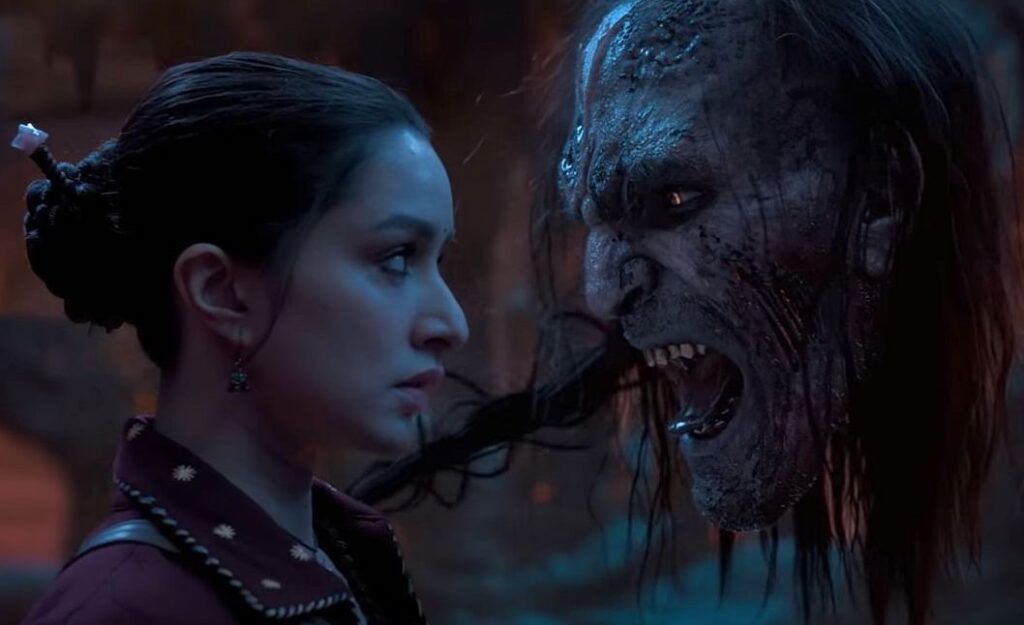Stree 2: Sarkate Ka Aatank, directed by Amar Kaushik and the sequel to his 2018 film, Stree, takes its cues from the events of the prequel. This time, it weaves another tale of horror/comedy set in the small town of Chanderi where the same characters created by Raj and DK are faced with the challenges of confronting a beheaded demon. While this instalment lacks its predecessor’s finely tuned thrills and spills, it still manages to have its share of moments and more.
After the spirit of the angry woman, Stree, leaves the town of Chanderi, the demon Sarkata, who had been buried underground since time immemorial, begins to wreak havoc. He had been abducting women for the last five years but the people of the town were unaware of this. One day, Rudra (Pankaj Tripathi), a phrenologist, receives a letter containing torn pages from the Chanderi Puran, warning about the arrival of Sarkata. Rudra meets Vicky (Rajkummar Rao) and informs him about the threat. Vicky does not give it much thought until his friend Bittu’s (Aparshakti Khurana) girlfriend, Chitti (Anya Singh), is abducted one night. Stree’s daughter (Shraddha Kapoor) reappears and tells Vicky about Sarkata’s history and the motivation behind his actions. Vicky and Bittu bring back their friend Jana (Abhishek Banerjee) from Delhi to Chanderi to help them fight against the beheaded monster…
In Stree, the abduction of men during a four-day religious festival if they respond to a whisper from a woman cleverly subverted gender roles, making a strong statement about the vulnerability and objectification women often experience. Whereas, in Stree 2, Sarkata abducts women who are modern in their outlook and prefer to dress themselves in Western outfits. It is used as a medium to critique societal norms and the societal discomfort with women who challenge traditional norms. In one of the scenes, a group of women surrounds Vicky and tells him that as long as the terror of Stree prevailed in Chanderi, the men were under their control. In another, under the trance-like influence of Sarkata, a group of men in the village unabashedly display their patriarchal attitudes towards women in the town. Such instances are used as a lens to examine the perils of power structures.
The humorous situations and one-liners delivered by various characters become the fuel that keeps the film moving evenly. There are also jump-scare moments strategically placed in the film, reminding us of the lurking danger. The introduction of Sarkata, the fight between the demon and Stree’s daughter with her pigtail, and the long showdown sequence in the end maintain a dynamic balance between fear and fun and ensure that we are constantly entertained and yet are never entirely comfortable with the ongoings on screen.
That said, there are also moments where the film trudges along before reaching its final objective. Only after Shama (Tamannaah Bhatia) is abducted, is the heartbroken Rudra prompted to check the sender’s address on a letter he had since the beginning of the film. Vicky, preparing to chop off Sarkata’s mobile head with a dagger, even as Kaushik cuts to scenes of men in the town suppressing the women’s liberties, comes across as juvenile rather than witty or funny. The introduction of the wolf from Kaushik’s previous venture, Bhediya, feels like a forced attempt to connect with the Maddock Supernatural Universe. It serves little purpose beyond that. The most problematic scene is when Vicky and his friends visit an asylum to extract information. It feels like a mockery of the people of the asylum and seems more suited to a brainless, crude comedy. The two back-to-back post-credit songs are both redundant and indulgent. All these elements collectively derail the film from reaching the heights of its predecessor.
Rajkummar Rao brings a comic charm and energy to his character. His natural charisma and comedic timing are impeccable. Shraddha Kapoor brings agility to her role with wonderful grace. The stunts she performs are both impressive and fluid, which adds a dynamic edge to her portrayal. Pankaj Tripathi and Abhishek Banerjee also shine with their comic presence and help heighten the overall humorous appeal of the film. Aparshakti Khurana has a brief presence in the film but the few moments he shares with his girlfriend, played by Anya Singh, come across as caricaturish.
On the technical side, Jishnu Bhattacharjee’s careful framing and use of colours help enhance the eerie atmosphere with shadowy lighting and haunting visuals. Hemanti Sarkar’s editing keeps the flow of the narrative seamless but she cannot entirely overcome the occasional drag caused by the writing. The sound design by Kingshuk Moran and the background score by Justin Varghese effectively bring out the tension and suspense, enhancing the emotional impact of key scenes. The VFX department has done a commendable job in creating the monstrous Sarkata with his detachable head and tentacle-like hair, evoking a sense of terror.
While Kaushik succeeds in presenting a socially conscious examination of chauvinistic practices, Stree 2 is not without its flaws. The integration of the film’s horror elements with the social message is sometimes uneven. But overall, the film has enough going for it to make for an engaging enough viewing.
Hindi, Horror, Comedy, Color


